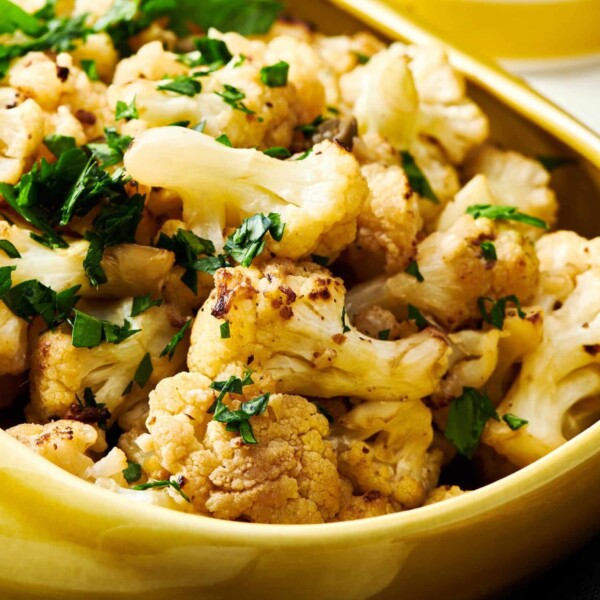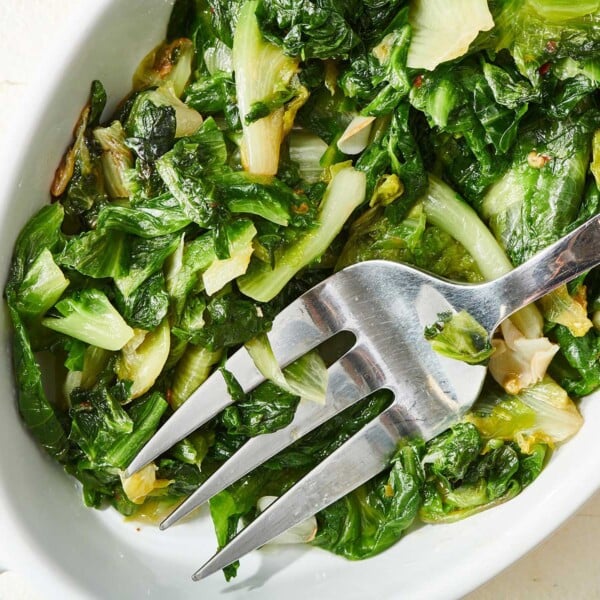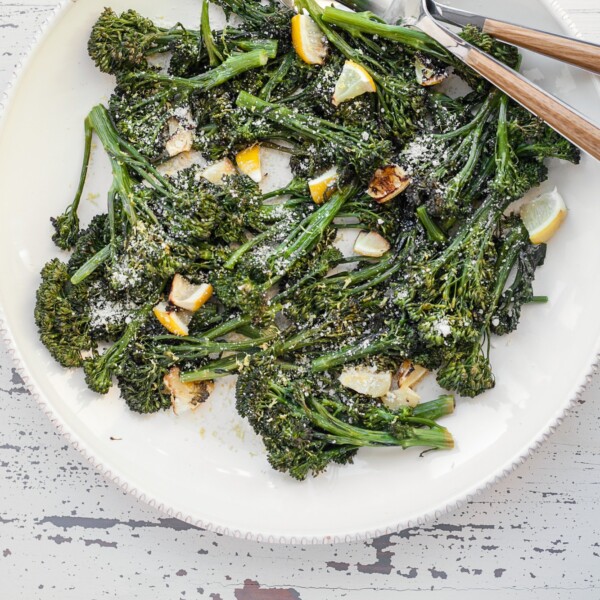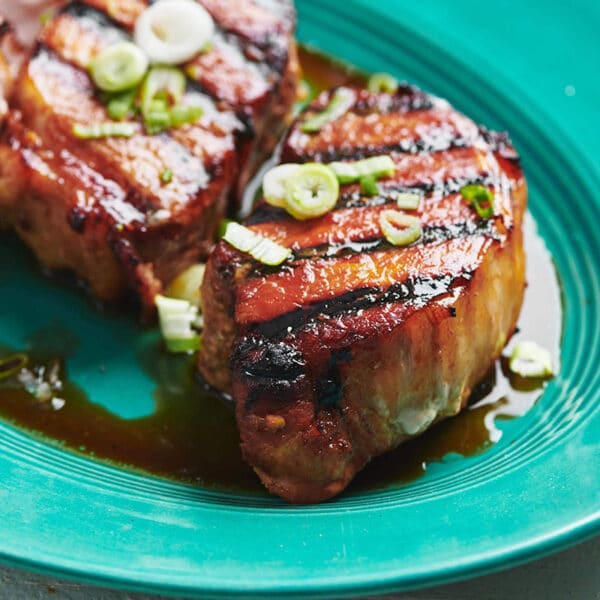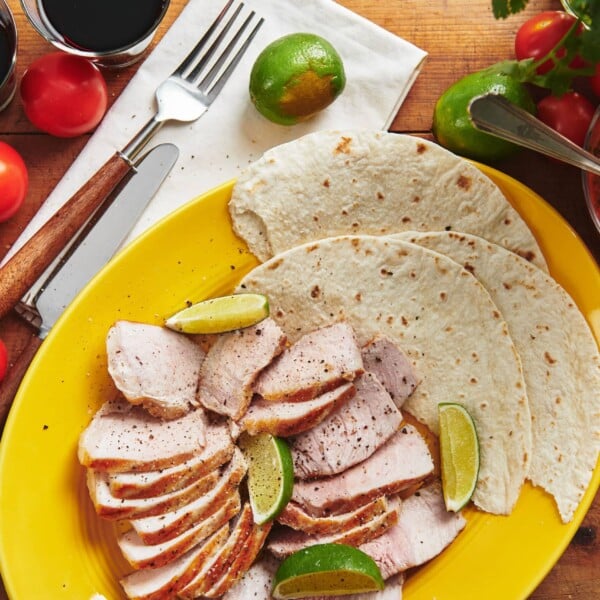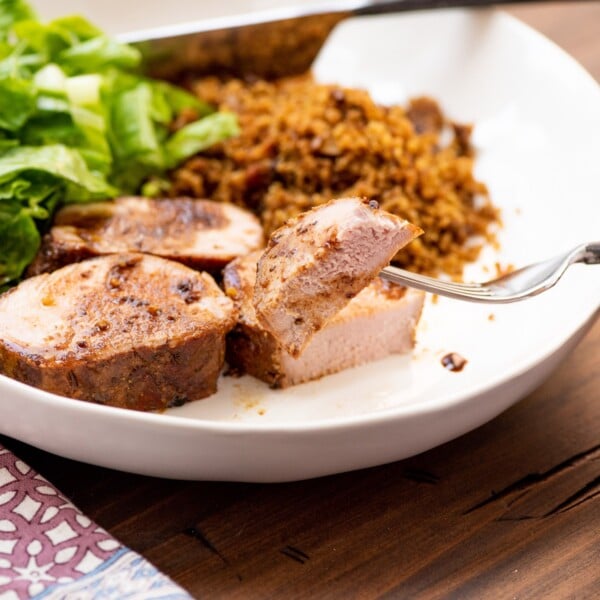Porchetta
on Apr 10, 2022, Updated Jul 01, 2025
This post may contain affiliate links. Please read our disclosure policy.
This slow-cooked Tuscan pork roast, with its amazingly tender inside and crackling crust, is an Italian classic for a reason.
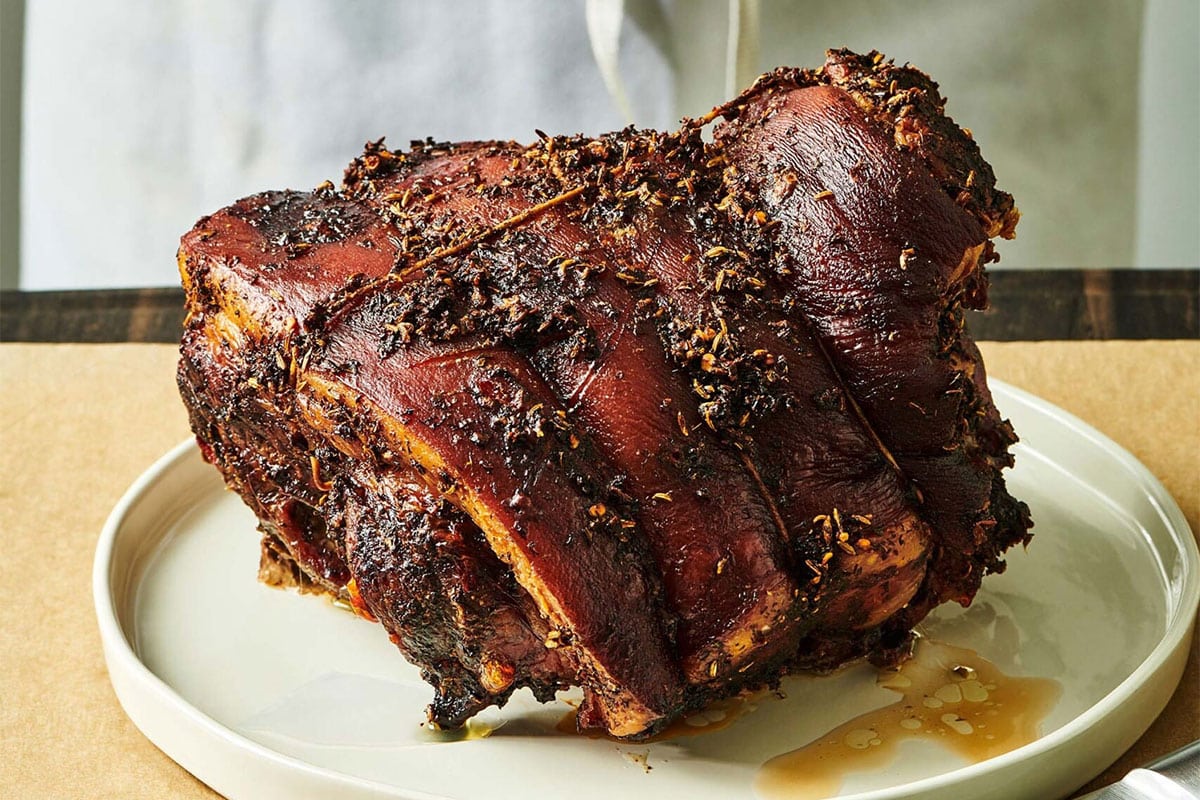
Porchetta is a showstopping Italian roast made by rolling and seasoning a piece of pork (in this case, a pork shoulder) with garlic, lemon, fennel, herbs, and spices. Then the pork is roasted until the skin outside is crisp and crusty, and the inside is tender, rich, and flavorful. It’s perfect for holidays, dinner parties, or any time you want a truly unforgettable centerpiece.
Porchetta isn’t shy. It’s big, it’s bold, it’s got fabulous contrasting textures. And while it looks wildly impressive, it’s really just pork herbs and time working their magic. Make sure everyone who is enjoying the porchetta gets a nice piece of this crispy, crackling skin to mix into their soft interior meat.
By signing up, you agree to our Privacy Policy.
Whether you’re serving it for a holiday feast or a dinner party with friends who love food, this irresistible main course will have your guests reminiscing about this meal for months to come. Serve with a salad with Homemade Italian Dressing or try this Sicilian Orange Salad. Offer Herb Mashed Potatoes or Roasted Potatoes on the side.
What's In This Post?
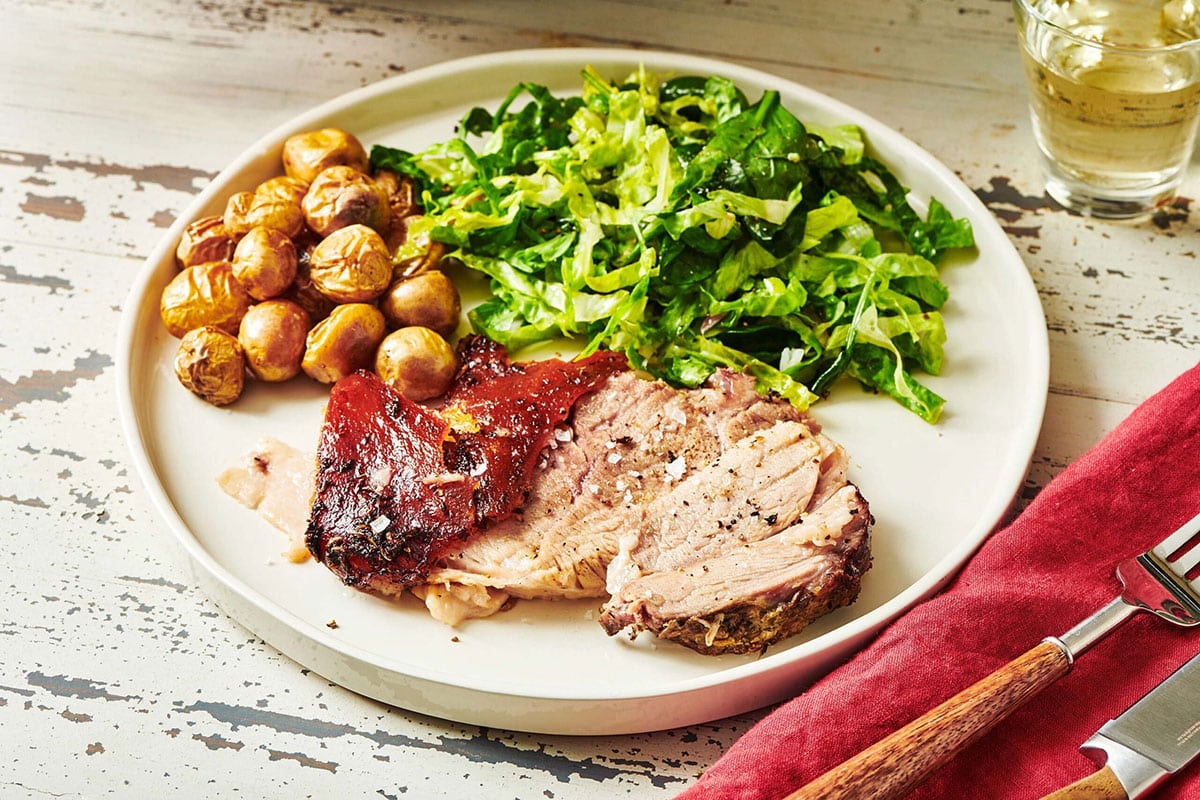
Ingredients
- Boneless pork shoulder roast – The pork should be tied, and the easiest thing to do is to get your butcher to tie it for you. If you are game to tie it up yourself, use kitchen twine and tie it up at two-inch intervals.
- Salt – To dry-brine the pork.
- Fennel fronds – Fennel fronds are the feathery plumes that sprout from the top of the fennel bulb. They can be trimmed off and chopped for this recipe.
- Minced garlic
- Fresh rosemary, sage, and thyme leaves
- Fennel seeds – If you have access to fennel pollen, great! That’s a classic ingredient in many porchetta recipes. It’s much fluffier than fennel seeds, and you can find it at Italian markets or specialty shops and, of course, online. If you can get it, use 2 tablespoons instead of the 1 tablespoon of fennel seeds.
- Lemon zest
- Red pepper flakes
- Olive oil – Helps the spice rub stick and promotes crisping.
- White wine
What Pork To Use for Porchetta
The cut of pork used in this recipe is a pork shoulder, which is readily available, quite affordable, and easy to handle.
If you can get a shoulder from a good butcher or other fine source of pork, please do that. And if possible, ask for a pork shoulder with some skin on it, along with a visible layer of fat. In order to get the crackling skin that makes porchetta so irresistible, you’ll need some fat and skin on the roast.
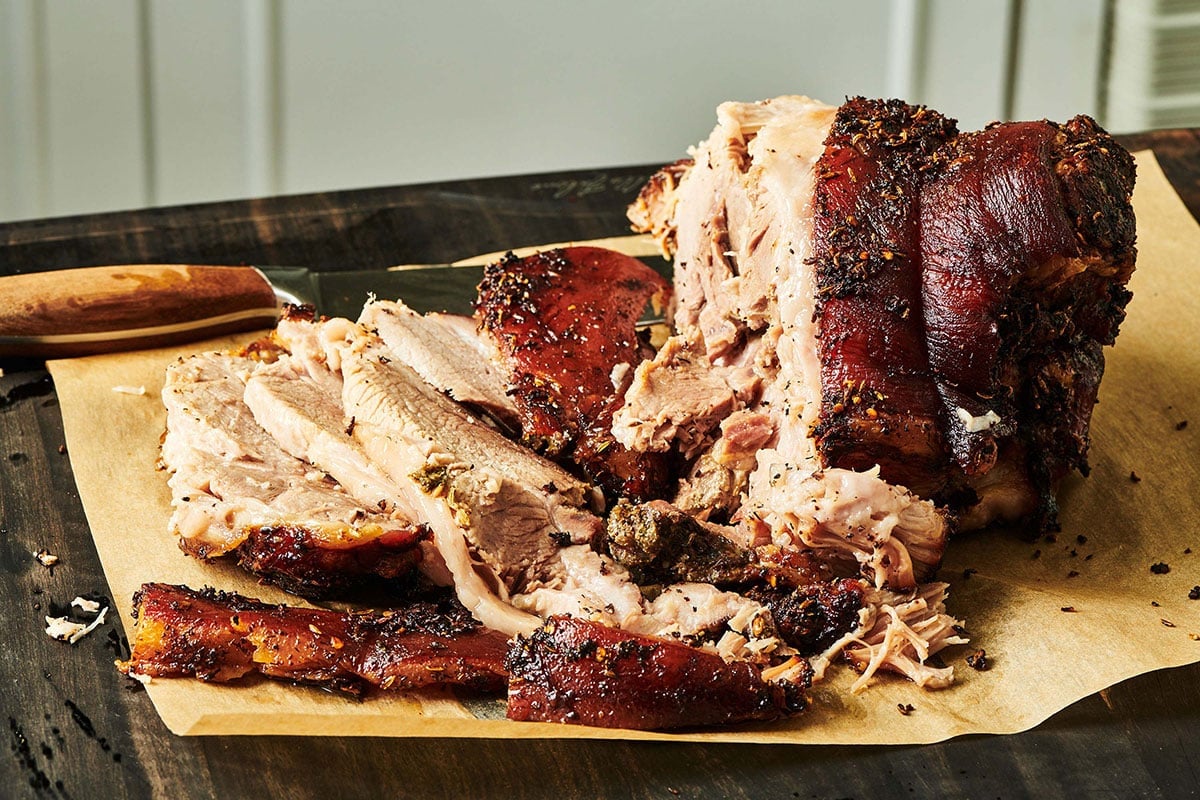
Some people use pork loin, but I think that cut of pork is too lean for this slow-cooked Tuscan pork roast. You’d be missing out on the skin and the fat, which make it fall-apart delicious. Some people use only pork belly, but that’s a bit rich for most.
A true classic porchetta pork roast is made from a deboned pig that has been rolled, tied, and roasted over a spit. Now, while I love to cook, I’m never going to debone a pig. But the idea of a slow-cooked piece of pork has always held great appeal for my family (see Fall-Apart Pork Roast and Pernil for two examples). I was thrilled with how well this method and recipe worked with a pork shoulder in my home kitchen!
How to Make Porchetta
- Trim the pork.
- Make the rub: In a food processor, combine the salt, fennel fronds, garlic, rosemary, sage, fennel seeds, lemon zest, pepper, red pepper flakes, and olive oil. Pulse to combine thoroughly into a paste.
- Prepare the pork: Rub the paste all over the outside of the pork, pushing the mixture into the slits. Tie the pork (if it wasn’t already tied) with kitchen twine at 2-inch intervals, creating a roundish, somewhat uniform shape. Place in a large shallow baking dish covered with plastic wrap, and refrigerate for 6 to 24 hours.
- Cook the pork: Bake the pork loin for 2 hours at 275 degrees F, then pour the wine over the roast and baste it. Continue roasting and basting every hour for another 3 to 4 hours or so.
- Finish and enjoy: Remove from the oven and let the pork rest for at least 15 minutes. Remove the twine, slice, and enjoy.
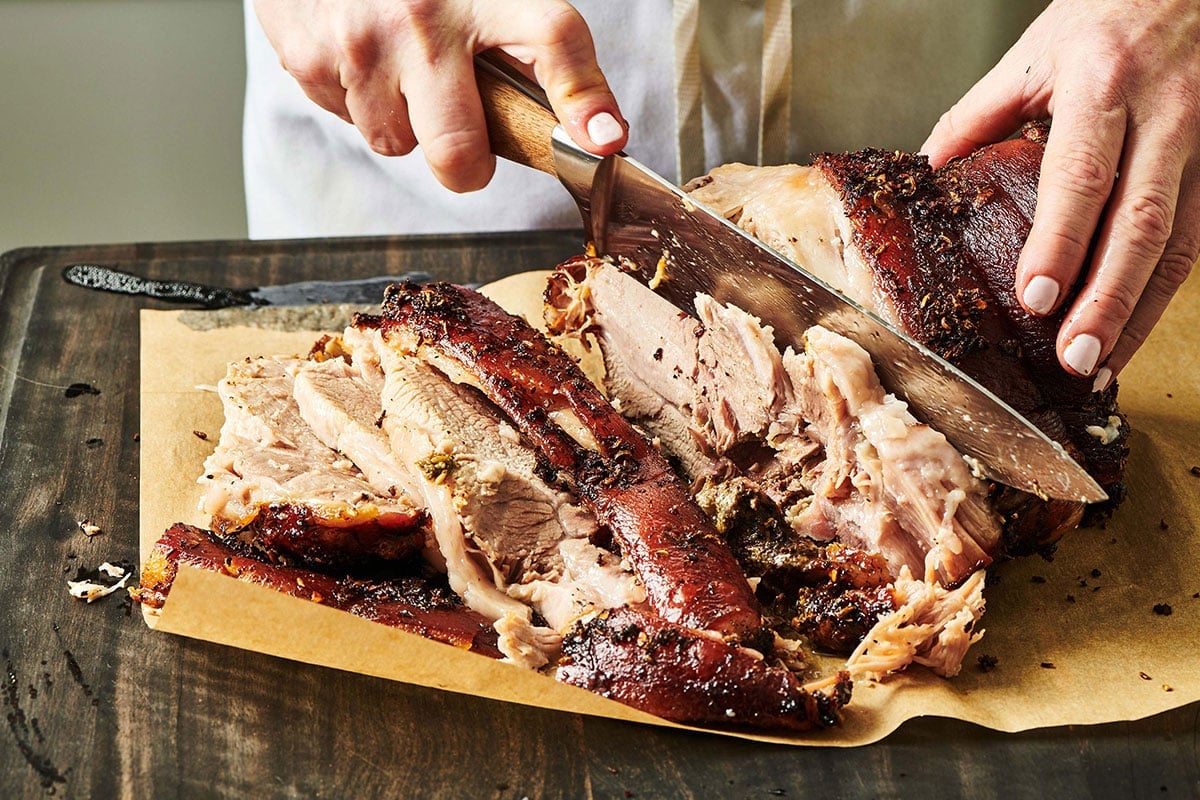
How to Get Crispy Porchetta Pork Skin
Getting a nice crust on the pork shoulder to contrast with the fall-apart tender meat is key to the success of this dish. For this, you need skin and fat on your pork. If there is a lot of external fat on the pork, trim it down to 1/4 inch. Score the skin and fat on the pork shoulder, trying not to cut down into the meat. This layer of fat will turn into a wonderfully crackly crust and should not be missed; it’s one of the best parts of the porchetta.
What to Serve With Porchetta
Pin this now to find it later
Pin It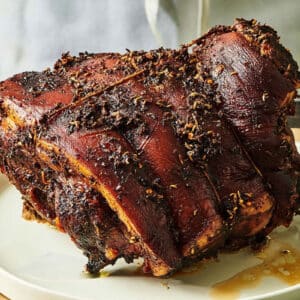
Porchetta (made with pork shoulder)
Equipment
Ingredients
- 1 (4 to 5 pound) boneless pork shoulder roast (already tied or tie it yourself; see below)
- 1 teaspoon kosher salt (or to taste)
- ¼ cup chopped fennel fronds
- 2 tablespoons minced garlic (about 6 cloves)
- 2 tablespoons chopped fresh rosemary
- 1 tablespoon chopped fresh sage
- 1 tablespoon fresh thyme leaves
- 1 tablespoon fennel seeds (crushed; see Note)
- 1 teaspoon finely grated fresh lemon zest
- 1 teaspoon freshly ground black pepper (or to taste)
- ½ teaspoon red pepper flakes
- ¼ cup olive oil
- 1 cup dry white wine
Instructions
- If there is a lot of external fat on the pork loin, trim it to ¼-inch thickness. With a sharp knife, score the skin in a cross-hatched pattern, about 1/8-inch deep, avoiding cutting down into the meat (if the pork is tied, avoid the twine). Then make about a dozen 1/2-inch deep slits over the non-skin surface of the pork shoulder.
- Season the pork all over with salt. In a food processor, combine the fennel fronds, garlic, rosemary, sage, fennel seeds, lemon zest, pepper, red pepper flakes, and olive oil. Pulse to combine thoroughly into a paste. Alternatively, you can use a mortar and pestle.
- Rub the paste all over the outside of the pork, pushing the mixture into the slits. If the pork has not been tied already, tie the pork with kitchen twine at 2-inch intervals creating a roundish, somewhat uniform shape. Place in a shallow baking large enough to hold the pork, cover with plastic wrap, and refrigerate from 6 to 24 hours.
- Allow the pork to come to room temperature, which will take about 1 hour. Preheat the oven to 275 F. Remove the plastic wrap and roast the pork loin for 2 hours, then pour the wine over the roast and baste it (if you have time). Continue roasting and basting every hour (again, nothing bad will happen if you don’t baste) for another 3 to 4 or so hours until a thermometer inserted into the center of the roast registers 180 F.
- Remove from the oven and let the pork rest for at least 15 minutes. Remove the twine, and slice the porchetta into thin or thick slices (your call!) and serve warm or at room temperature.
Notes
Storage
Store leftover Porchetta in an airtight container in the fridge for about 5 days.Nutrition
It is pronounced “por-CHEH-tuh“. And yes, some people spell it porketta (por’ ketta), which is how it sounds like it should be spelled phonetically in English.
